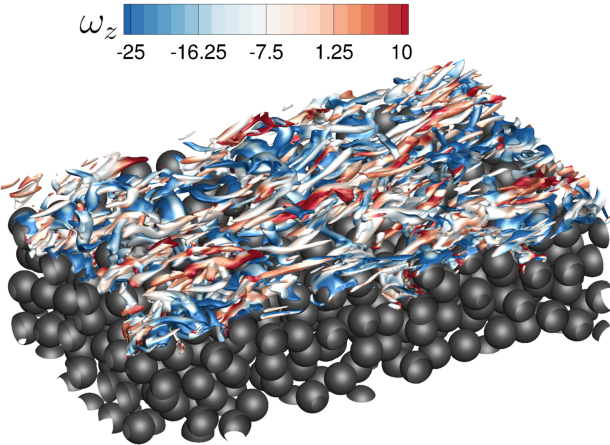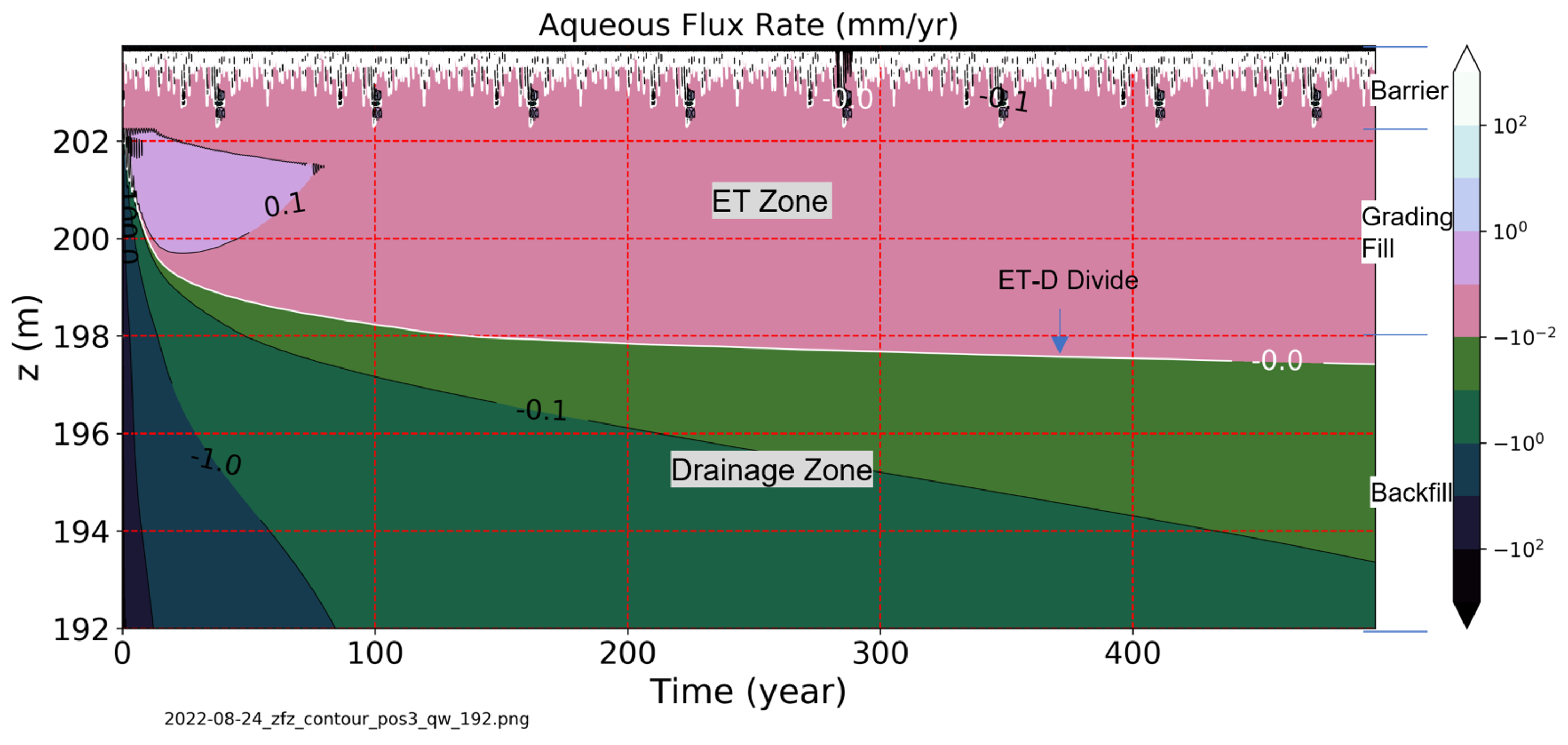Technical Session 8
Multiscale Modeling in Porous Media: Theory to Applications
Thursday, November 16 | 1:00 - 5:00 p.m. Pacific Time
► WATCH THE RECORDING:

One of the biggest challenges of predictive modeling in porous media is that different aspects of physical, chemical, and biological systems (flow, transport, reactions, etc.) are interconnected across a variety of spatial and temporal scales. Modeling and prediction of coupled physicochemical and/or biogeochemical processes at multiple space and time scales is critical for achieving a mechanistic understanding of processes occurring in both engineered and natural systems. For engineered systems, multiscale modeling is used in a myriad of applications, including the design and optimization of porous media, combustion systems, fuel cells, and chemical reactors. In contrast to engineered systems, which are often well-characterized, natural subsurface systems generally have uncharacterized heterogeneity with coupled process interactions across a wide spectrum of scales. This gives rise to both emergent properties and scale-dependent behavior that is not always readily predictable. Although significant advancements have been made in the theory of complex, multiscale phenomena, there remain numerous open questions regarding both the appropriate theoretical frameworks needed, and the level of detail required to accurately represent such processes once a framework is identified. This session will explore recent developments in multiscale modeling of both engineered and natural systems and may include presentations on new theoretical approaches as well as case studies involving field applications. This topic is posed broadly and may include upscaling methods and upscaled model formulations, multiscale model coupling, multiresolution or multi-fidelity modeling, linkage of physics-based models with ML, and model abstraction approaches. Of particular interest are the representations of coarse-grained nonlinear phenomena (reactions, nonlinear diffusion, etc.).
Session Organizers: Xiaoliang (Bryan) He and Mark Rockhold, Pacific Northwest National Laboratory; Brian Wood, Oregon State University
| 1:00 - 1:05 p.m. |
Opening Remarks __________________________________________________ |
|
1:05 - 1:25 p.m. Turbulent Transport Across Sediment-Water Interface: Pore-resolved Simulations and Upscaled Modeling Sourabh V. Apte, Oregon State University ► PRESENTATION PDF |
 Simulations of turbulent open channel flow over a porous sediment bed are performed over a range of permeability Reynolds number of (2-10) representative of aquatic systems. A diffuse interface continuum approach based on the volume-averaged Navier-Stokes (VANS) equations is used by defining smoothly varying porosity across the bed interface and modeling the drag force in the porous bed using a modified Ergun equation with Forchheimer corrections for inertial terms (Wood et al., Annual Review of Fluid Mechanics, 2020). The results from the continuum approach are compared with a pore-resolved DNS in which turbulent flow over a randomly packed sediment bed is performed using a fictitious domain method to enforce the rigidity and no-slip condition on the monodispersed spherical particles representing the sediment bed. A spatially varying porosity profile generated from the pore-resolved DNS is used in the continuum approach. Mean flow and Reynolds stress, pressure fluctuation statistics ,and net momentum exchange between the free-stream and the porous bed are compared between the two DNS studies, showing good agreement. Effect of protrusions from the top layer of the sediment bed, present in the pore-resolved study, is not captured by the diffuse interface model, and further improvements to the VaNS approach will be investigated in the future. Coauthors: Shashank Karra (Oregon State University) |
|
1:25 - 1:45 p.m. Digital Twins from Microscope Image Data James E. McClure, Virginia Tech ► PRESENTATION PDF |
 LBPM is an open source software package designed to model complex fluid flows using lattice Boltzmann methods (LBMs) based on microscope image data. LBPM includes a variety of simulators to model fluid flow through complex microstructures, with applications to geological fluid flows, hydrogen fuel cells and cell biology. Lattice Boltzmann methods can be constructed to model a wide range of physics, and LBPM solvers are capable of recovering the Navier-Stokes equations, modeling the behavior of immiscible fluids, and solving the Nernst-Planck equations with Gauss's law to predict transport in ionic systems. Cell membrane biophysics capabilities support whole cell modeling for electrochemical transport processes that control many biological phenomena. Lattice Boltzmann methods are well-suited toward parallel implementation, and LBPM is capable of scaling to thousands of GPU. In this talk I will summarize recent performance optimization of LBPM for leadership-class computing systems at the Oak Ridge Leadership Computing Facility (OLCF) based on the Frontier Center for Accelerated Application Readiness (CAAR). I will discuss the implementation strategy used by LBPM to target different computing architectures, with support for conventional CPU as well as both NVIDIA and AMD GPU. We further consider the growing near-term opportunities to link simulations with microscope image data and AI/ML techniques to construct digital twins for small systems. Within this context, physics-based modeling can play a major role in informing the complex engineering solutions needed to navigate the energy transition. |
|
1:45 - 2:05 p.m. Numerical Modeling of Heterogeneous Porous Media Burners Using Volume-Averaged Method Aniruddha Saha, Cornell University ► PRESENTATION PDF |
The presence of a variety of length scales in the phenomenon of combustion in a porous media demands for an effective upscaling process to tackle the computational complexity in a numerical study. The volume-averaged method allows us to capture the essential features of the microstructure by averaging the microscopic equations over a suitable representative elemental volume. Predicting system behavior such as combustion rate, emissions, and temperature distribution at a larger scale closely matches detailed simulation results at a fraction of the computational cost. Achieving efficient combustion in porous media relies on the burner’s geometric characteristics, flame stabilization, reduced NOx emissions, and enhanced material properties. Stabilizing the flame in the matrix provides higher flame speeds and can burn in fuel-lean conditions. The recirculation of heat generated from combustion by conduction through the solid matrix enables reducing unburnt hydrocarbons. A new solver based on OpenFOAM is presented to model the interactions between a pre-mixed flame and a heterogeneous porous media. The non-catalytic combustion dynamics of methane are being simulated computationally in an inert porous media. A volume-averaged approach is adopted to study the combustion of the gaseous mixture and the thermodynamic coupling of the gas-solid system. Our model helps us validate the experimental results and incorporates underlying topological details of the porous matrix to explore flame stabilization conditions, temperature, and emissions. The modelling of heterogeneous porosity and thermophysical properties, such as effective conductivity and heat transfer coefficient, is performed. The combustion is described through detailed GRI3.0 mechanism (53 species and 325 reactions). By leveraging volume-averaged methods, this novel approach accurately captures microstructural effects on the modulation of a flame in a porous media. Therefore, it allows for predicting the behaviour of tailored porous structures, informed by experimental data, and can be used for much broader flame conditions. Coauthors: Sadaf Sobhani (Cornell University) |
|
2:05 - 2:25 p.m. Upscaling Reactions in Tissues with Deep Neural Networks for Closure Brian D. Wood, Oregon State University ► PRESENTATION PDF |
In this work, we use a combination of formal upscaling and data-driven machine learning for explicitly closing a nonlinear transport and reaction process in a multiscale tissue. The classical effectiveness factor model is used to formulate the macroscale reaction kinetics. We train a multilayer perceptron network using training data generated by direct numerical simulations over thousands of microscale examples. Once trained, the network is applied in an algorithm for numerically solving the upscaled (coarse-grained) differential equation describing mass transport and reaction in two example tissues. The network is described as being explicit in the sense that the network is trained using macroscale concentrations and gradients of concentration as components of the feature space. Network training and solutions to the macroscale transport equations were computed for two different tissues. The two tissue types (brain and liver) exhibit markedly different geometry and spatial scale (cell size and sample size). The upscaled solutions for the average concentration are compared with numerical solutions derived from the microscale concentration fields by a posteriori averaging. There are two outcomes of this work of particular note: 1) we find that that the trained network exhibits good generalizability, and it is able to predict the effectiveness factor with high fidelity for realistically-structured tissues despite the significantly different scale and geometry of the two example tissue types; and 2) the approach results in an upscaled PDE with an effectiveness factor that is predicted (implicitly) via the trained neural network. This latter result emphasizes our purposeful connection between conventional averaging methods with the use of machine learning for closure; this contrasts with some machine learning methods for upscaling where the exact form of the macroscale equation remains unknown. |
| 2:25 - 2:45 p.m. |
Open Discussion __________________________________________________ |
| 2:45 - 3:15 p.m. |
Posters and Vendor Exhibit __________________________________________________ |
|
3:15 - 3:35 p.m. AI-Augmented Drone Observation and Multiscale Modeling of Streambed Hydro-Biogeochemistry Yunxiang Chen, Pacific Northwest National Laboratory ► PRESENTATION PDF |
Stream hydro-biogeochemistry (HBGC) is controlled by the complex interactions among microtopography, turbulence, and microbial reactions. Despite their importance in regulating river ecosystem functions, our knowledge of the complex interactions is limited largely due to the lack of high-resolution data of microtopography and therefore limited capability to study the interactions of HBGC under realistic microtopography conditions. In this presentation, we will first demonstrate an AI-augmented drone observation technology that enables acquiring the data of high-resolution microtopography, grain size distributions, and water availability from drone photos, and then show how these data could be integrated with fully coupled surface-subsurface computational fluid dynamics modeling to extract key HBGC parameters at realistic streambeds in the Yakima River Basin. Coauthor: Jie Bao (Pacific Northwest National Laboratory) |
|
3:35 - 3:55 p.m. Evaluation of Remedy Performance of the Uranium Plume in the 300 Area of Hanford Site Sunil Mehta, INTERA Inc. ► PRESENTATION PDF |
Uranium contamination exists in the 300 Area of the Hanford Site. The selected remedy is a combination of enhanced attenuation (via in-situ phosphate treatment) over a 12,140 m2 (3 acre) area along with monitored natural attenuation for the remaining portion of the groundwater plume. To assess the long-term performance of the selected remedies, scale-dependent numerical models are developed to evaluate the fate and transport of uranium in variably saturated media. Coauthors: Mart Oostrom (INTERA Inc.), Rainer Senger (INTERA Inc.), Praveena Allena (INTERA Inc.), Fred Zhang (INTERA Inc.), Ryan Nell (INTERA Inc.) |
|
3:55 - 4:15 p.m. Evaluation of the Need for Three-Dimensional Contaminant Transport Modeling of the Hanford Central Plateau Vadose Zone Mart Oostrom, INTERA, Inc. ► PRESENTATION PDF |
The Hanford Site Composite Analysis for low-level waste disposal on the Hanford Site’s Central Plateau includes simulation of flow and transport in the vadose zone (VZ). The VZ modeling for the Central Plateau faces some unique challenges due to the number of sources (several hundred disposal sites, many with large disposal volumes with potential for comingling of water and contaminant from multiple sites in the VZ) and highly variable contaminant inventory in a setting with considerable thickness of the VZ, significant sediment heterogeneity, variable anisotropic hydraulic and transport properties, and spatial and temporal variation in recharge. To address the resulting complexity, the area was divided into 26 three dimensional (3D) multi million node models that contain contaminant sources and liquid discharges likely to commingle during migration through the VZ to the water table. VZ plume commingling may affect the spatial and temporal distribution of contaminant flux to groundwater. Commingling occurs when liquid discharge sources are near other liquid sources and is impacted by disposal characteristics, hydrological properties, and the distance between waste sites and other release areas. When a contaminant emanating from multiple waste sites commingles, complex transport behavior might develop with multiple peak arrival times at the water table. This behavior may only be captured when waste sites creating commingled contaminant plumes are evaluated in the same 3D VZ model. The compounding effect of adjacent waste sites on subsurface transport cannot be captured using models representing a single waste site, or by models simulating flow and transport using a one-dimensional (1D) approach. The computational demands of the Central Plateau 3D VZ simulation suite are considerable, with a typical run time of several days per VZ model using a high-performance computer and parallelization. The intensive nature of the simulations complicates execution of extensive sensitivity and uncertainty analyses. To validate the need for complex 3D simulations, an alternative approach using 1D simulations of VZ transport below individual waste sites is applied and evaluated. 1D simulations have much smaller run times and are therefore more suitable for sensitivity and uncertainty analyses. The purpose of this presentation is to compare 1D and 3D technetium 99 VZ transport and transfer rates to groundwater for five selected waste sites (two tanks, two cribs, and one trench) to demonstrate the need to consider 3D flow and transport mechanisms. Coauthors: Dennis Fryar (INTERA, Inc.), Will Nichols (INTERA, Inc.) |
|
4:15 - 4:35 p.m. Modeling Evapotranspiration and Soil-Moisture Flow of a Modified RCRA Subtitle C Surface Barrier Fred Zhang, INTERA, Inc. ► PRESENTATION PDF |
 The modified Resource Conservation and Recovery Act Subtitle C (RCRA C) surface barrier is an engineered design to immobilize the buried nuclear waste by limiting infiltration through the use of evapotranspiration (ET) layers and by preventing bio-intrusion into waste with the use of an asphalt layer. Such type of surface barrier with protective side slopes has been designed for the C Tank Farm at the Hanford site. In this investigation, the 500-year performance of the ET surface barrier was evaluated by numerical simulation using the eSTOMP-W simulator with newly added ET simulation capability. Sensitivity analysis was conducted for selected model inputs. The two-dimensional simulation domain consisted of a 230-m wide ET barrier and a 10-m buffer zone on each side with a deep vadose zone extending to the groundwater table. ET was simulated as sinks (negative sources) in the surface barrier with the consideration of root distribution and soil water stress. Multi-year daily potential or reference ET, which was an input and determined externally, and hourly precipitation cycles were repeated for the 500-year evaluation. The results indicate that the ET surface barrier experienced an annual cycle of recharge-release process. For a surface barrier without degradation, there was no percolation from the surface barrier and hence a zero-flux plane (ZFP), which is a nearly lateral plane that no soil-moisture flow passes through, formed beneath the surface barrier. This ZFP, also termed as the ET-drainage divide, separated the vadose zone into the ET zone above the ZFP and the drainage zone below it. The ET-drainage divide disappeared over the time period when there was percolation from the surface barrier, for example, for the combination case of degraded asphalt layer with very wet years. The ET-drainage divide did not exist below the surface barrier when there was a continuous percolation from the surface barrier, for example, for the case with degraded vegetation. These results provide insight towards finding ways to reduce recharge using engineering measures in the arid and semi-arid regions. Coauthors: Sunil Mehta (INTERA, Inc.), Marcel Bergeron (Washington River Protection Solutions, LLC) |
|
4:35 - 5:00 p.m. |
Open Discussion and Closing Remarks __________________________________________________ |